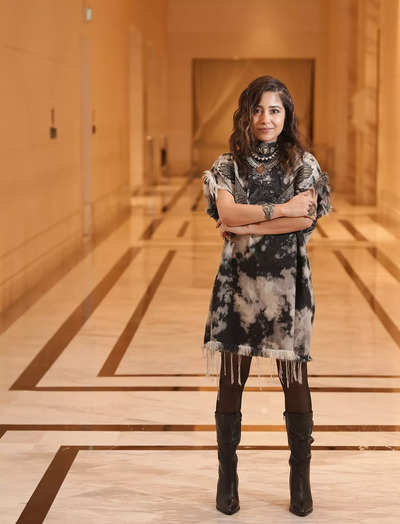PHILADELPHIA – It was Day 7 with 90-plus degree temperatures in Philadelphia, and a lot of the animals were moving a bit more languidly, but Shareef Parker's sons, Michael and Dallas, ages 4 and 5 respectively, didn't seem to mind. "Snakes," answered Michael when asked his favorite animal. "And monkeys.
" Dallas, Parker said, was partial to the lions and other big cats. With eight children ranging in age from 1 to 15, Parker said his family's membership at the Philadelphia Zoo, this month, comes in handy often: He can pick up and take whichever kids want to go, make a quick drive from their home in nearby Montgomery County and stay as long as the kids want; the family does so at least a few times a year. Tony Vickers' 2-year-old daughter, Noelle, sat in her stroller, watching a red-footed tortoise, one of the zoo's "ambassador animals," make its way (slowly, of course) toward a water dish.

"We're members," said Vickers, a Kentucky native who lives in Philadelphia. "We practically live here. Sometimes we come twice a week.
It's close to home, it's easy to get in and out, and the staff is always friendly." America's first zoo, which opened its doors to the public on July 1, 1874, has endured through two world wars, the Great Depression, political and social upheaval and not one but two global pandemics. But as it marks a century and a half, the Philadelphia Zoo − like others across the nation − has been finding unique ways to engage visitors and adapt to evolving demographics, climate change, rising costs and post-pandemic challenges.
The best zoos "have a high degree of trust and favorability in their communities," said Dan Ashe, president and CEO of the , which accredits facilities in the U.S., Canada and elsewhere.
"Philadelphia is a great example of a place where they take to heart the importance of being part of the community − making sure the community is a part of the zoo and the zoo is not something that’s an enclave within their community," Ashe said. "People see (zoos and aquariums) as valuable assets, trusted sources of information and so they enjoy a high degree of trust." There are 134 accredited zoos (and nine facilities that include zoos and aquariums) in the U.
S., The organization offers accreditation at least every five years. There are 213 zoos, aquariums and related facilities in the U.
S. spread across 46 states and the District of Columbia. AZA-accredited zoos and aquariums are home to more than 780,000 animals and more than 8,600 species, including 800-plus species that are vulnerable, endangered, critically endangered or extinct in the wild, the organization says.
Their economic impact is significant: In 2018, the most recent year surveyed, AZA-accredited zoos and aquariums brought more than $22.5 billion to the U.S.
economy, supporting more than 198,000 full-time jobs and serving more than 183 million visitors nationally. All of the AZA's member zoos and aquariums ‒ which Ashe called "the cream of the crop," accredited by an organization he described as "the gold standard worldwide" ‒ struggled during the pandemic, forced to close and lose millions in revenue, even as they needed to continue to care for the animals and pay essential employees. Ninety-six percent of AZA's member organizations, which include institutions public and private, large and small, for-profit and nonprofit, were closed for an average of six months, Ashe said, and some closed for as long as 14 months.
"It was a very difficult period of time," he said. "But they received generous support from the government," including tax credits, funds, money and money earmarked for institutions caring for endangered species. Now, Ashe said, "Our members are doing quite well.
...
When the public came back, they came back." Dr. Jo-Elle Mogerman took over as Philadelphia Zoo's president and CEO in October after leading the St.
Louis Zoo's new , a 425-acre safari park and conservation center near where the Mississippi and Missouri rivers meet, set to open in 2027. She wanted to learn as much as she could about Philadelphia, which she called "a land of firsts." "That has really informed my thinking about what the next phase is and how to level up.
(The zoo) is part of being a Philadelphian, and they deserve the very best," she said. Philadelphia Zoo has a sterling reputation, said Mogerman, who also worked at and , both in Chicago. With a background in conservation biology, Mogerman was drawn to Philadelphia Zoo's history of scientific innovations: It was among the first zoos to have an animal laboratory and to study , animal nutrition and wildlife conservation.
Its serves a dual purpose: Animals, from prowling big cats to bouncing pint-size lemurs, can navigate through a set of above-ground trails, offering enrichment for species used to wide ranges ‒ and a way for visitors to get a closer (and still safe) view of animals on the move. That system has been replicated in more than 70 zoos worldwide, Mogerman said. "Our work is critically important as advocates for wildlife," Mogerman said.
"I tell people bring the family, come here for a date night, have fun. We as humans have a natural affinity for animals. but as a leader of this organization, I know we need to make sure people are supportive of wildlife.
" While the zoo's core is young families, they're not the only demographic it appeals to. Events such as the zoo's upcoming , evening hours for members, ongoing African Culture Fests and animal spotlight series help further the zoo's mission, she said: "Come in for the beer and we'll talk to you about our conservation efforts and how you can act to make a positive impact." , a wintertime event that features light-based attractions and roaming performers, brings visitors during a time when the zoo, which is open year-round, traditionally saw fewer people.
The zoo is "a microcosm of what's happening in the world," she said. "The wild isn't what it used to be. Our approach to conservation has changed dramatically; we used to parachute into other countries and try to tell them what to do.
" Now, the zoo's conservation efforts focus on the communities where they're working, taking into account local traditions and ways of life, engaging with the people who live there and working to understand how to preserve species and habitats with their help. In West Philadelphia, where the zoo is bounded by busy thoroughfares and a regional rail line, it means being a good neighbor, hosting community nights during the LumiNature show and throughout the year, offering memberships to nonprofits, engaging with community groups and hosting programs for city teens. Rachel Metz, the zoo's vice president of animal well-being and conservation, said 700 million people visit zoos and aquariums worldwide − more than the number who attend professional baseball, football, hockey and basketball games combined.
"We're not just fun places to visit," she said. "Without us, some animals might not exist, and that's an overwhelming thought." "You're looking at them, into the eyes of a tiger or a primate, and your heart is open because they're beautiful, but you're open to learning," Mogerman said.
"And that's our superpower.".



















